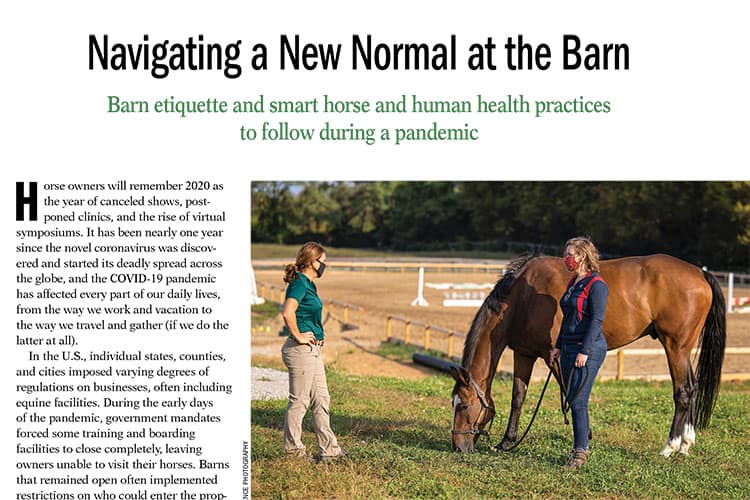
Equine Flu Season Steps for Horse Owners
Here’s how to protect your horse from this highly contagious respiratory virus.

Here’s how to protect your horse from this highly contagious respiratory virus.

Remember these three core biosecurity steps to help keep your horses as well as your fellow competitors’ horses healthy.

One survey found 84% of veterinarians didn’t use PPE or wash their hands between equine dental patients. One researcher says biosecurity should be the expectation, not the exception. Find out why.

The AAEP revised the cutoff for a temperature to be considered a fever, resources on integrated pest management, and guidelines clarifying regulatory involvement’s role in outbreak situations.

Vaccination and quarantine play key roles in controlling infectious respiratory pathogens such as equine influenza virus.

Taking temps daily, whether rectally or via a microchip with an integrated temperature biosensor, can help you catch and track outbreaks.

When doctors diagnosed West Nile virus neurologic disease in a Sicilian man, they immediately started a chain of events leading to massive testing of nearby horses, dogs, birds, and mosquitoes to find the outbreak’s source.

Equine biosecurity might become easier thanks to new in-field tests using recently developed isothermal technology, which could detect infected horses in less than an hour.

Island horses have the same health and welfare needs as any horse, but where they live presents a unique set of advantages and disadvantages for their owners and veterinarians.

How long does it take for a horse to recover from a respiratory virus, such as equine influenza or herpesvirus (EHV)?

Over the past few decades veterinarians and researchers have investigated major EHV-1 outbreaks in the U.S. to learn more about how to contain and prevent future occurrences.

Equine medical facilities can become hotbeds of infection without careful planning and effective management of animal and human traffic flow.

COVID-19 has touched every part of our lives, including our time at the barn. Download this free guide for smart horse and human health practices to follow during a pandemic.

With risk assessments and appropriate mitigation, the British Equine Veterinary Association notes vets should be able to carry out work that is essential to support horse welfare and the horse industry.

Strep zoo are responsible for a variety of diseases and issues in horses, including pneumonia, abortions, and upper respiratory, wound, testicular, and neonatal infections.

Learn about your horse’s health, behavior, and personality as you acclimate him to a new home, diet, and herd.
Stay on top of the most recent Horse Health news with
"*" indicates required fields